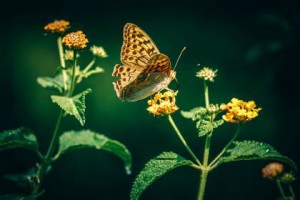These Gardening Tips Will Have Your Garden All A-Flutter This Summer
 Creating a butterfly garden is a lovely way to increase the beauty of your yard, but also encourage the multiplication of an important insect. Butterflies help with the pollination process and their fluttering around your yard makes being outside more enjoyable. If you are planning a sanctuary for butterflies, use these gardening tips to get started.
Creating a butterfly garden is a lovely way to increase the beauty of your yard, but also encourage the multiplication of an important insect. Butterflies help with the pollination process and their fluttering around your yard makes being outside more enjoyable. If you are planning a sanctuary for butterflies, use these gardening tips to get started.
Choose the right plants. Your butterfly garden needs showy blooms to attract butterflies with their nectar, but that’s not the only consideration. You need to keep in mind these major elements of a successful butterfly garden:
- Flowering plants are important for feeding butterflies with nectar and attracting them with colorful blooms. Each region is accommodating to different butterfly-attracting varieties, so check with your local nursery for gardening tips to help you choose the plants that will work best in your climate.
- You’ll need the kinds of plants that caterpillars like to eat in order to make your butterfly garden successful.
- Talk with your local nursery about which plants are the best choice in your region for getting butterflies to lay eggs in your garden.
- Choosing a variety of plants can help you attract different butterfly species. Most plants will be marked accordingly if they are butterfly friendly, but you can also talk with an experienced gardener to see if there are particular plants that will be good to mingle so that you get some different species of butterflies visiting and living in your garden.
Add in these important elements. Not only do you need the right plants, but you also need a few other features in your garden to help butterflies thrive:
- Water is a necessity for butterflies, but it doesn’t have to be much to keep them happy. You’ll mostly meet their needs with dew and rain water, but it may be helpful to have a puddling station in your butterfly garden.
- Sun is important for butterflies to keep warm. They are cold-blooded creatures that need the warm rays to help them stay in your garden long enough to eat and lay eggs.
- Shade is critical, too. Be sure that your butterflies have a place to rest when the sun is too hot, as well as a place to hide from predators.
- Shelter is a good idea for butterflies when the wind starts blowing or if a thunderstorm blows through your area.
Keeping all your butterfly-friendly plants straight may become a bit of a challenge! You can create a neat, orderly butterfly garden that attracts a variety of insects when you label your garden with Kincaid Plant Markers. It will be easy to see which varieties attract which types of butterflies when you have them clearly marked, and you’ll enjoy seeing a garden that’s organized. Visit the Kincaid Plant Markers website to learn more and hear a few gardening tips for getting started this spring.
